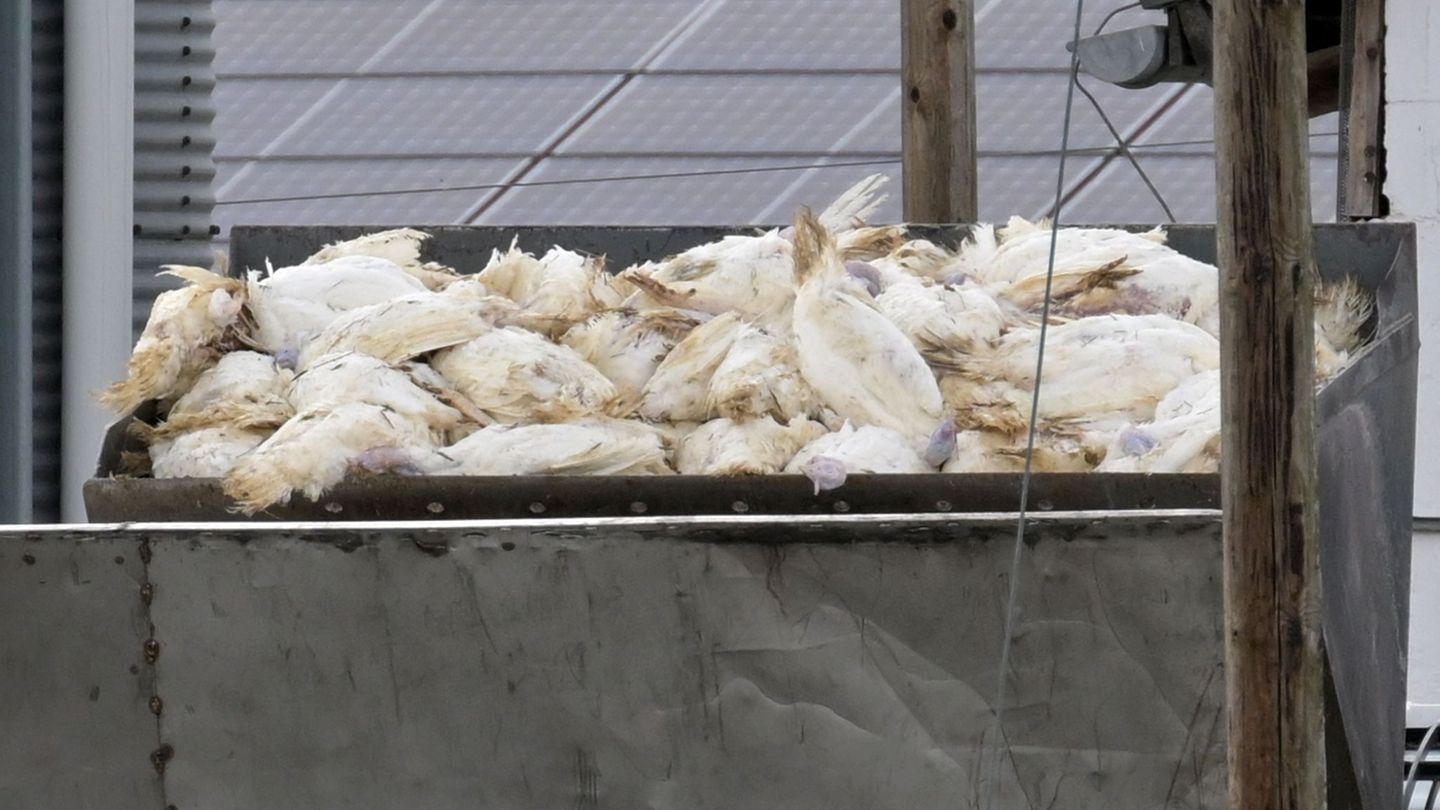animal disease
Bird flu is spreading – poultry farmers demand protection
Copy the current link
Add to wishlist
More than 200,000 poultry have already had to be killed – and according to the FLI, the peak of bird migration is still to come. What does this mean for outdoor farms?
With the rapid spread of bird flu and growing concerns about economic damage, poultry farmers are calling for greater protection of their stocks. The top priority must be to prevent the spread of the virus, protect animals and prevent damage, said Georg Heitlinger from the Baden-Württemberg State Association of the Poultry Industry.
He called for a nationwide stable requirement. Under such an official order, farm animals such as free-range poultry would have to be kept in closed stables.
Although the animal disease is widespread in Germany all year round, the infection rate gains momentum with the bird migration in autumn. According to estimates by the Friedrich Loeffler Institute (FLI), the Federal Research Institute for Animal Health, the spread of bird flu among cranes has now reached a level previously unknown in Germany.
The institute assumes there are more than 200,000 dead animals
The FLI has raised the risk assessment to high. It estimates that more than 200,000 chickens, geese, ducks and turkeys have been killed and disposed of in their holdings following outbreaks of avian influenza so far this autumn in order to contain the spread of the disease.
The institute does not rule out the possibility that the infection rate will reach similar levels to four years ago. According to the trade press, more than two million animals nationwide had to be culled in the winter of 2020/21 in one of the most serious epidemics to date in Germany.
Regular reports of bird flu outbreaks
According to an FLI spokeswoman, cases of infection have been registered in 50 poultry farms nationwide so far this year, 26 of them in October alone. The range of animals killed as a precautionary measure ranged from 5,000 to 93,000. New reports were received regularly. And that’s likely to continue for a while since the peak of bird migration is still ahead, she said.
Sick wild birds that rest on the way to their winter quarters in the south are considered to be carriers of avian influenza. The animal disease is often fatal for infected animals. This year, cranes have been particularly badly affected, but the highly contagious H5N1 virus has also been confirmed in other species such as wild geese and ducks, it said.
Ministry of Agriculture for higher compensation payments
If the killing of animals is ordered after an outbreak of avian influenza, the owners receive compensation, which is staggered according to the animal species and, according to the law, may not exceed the maximum rate of currently 50 euros.
Ducks or turkeys often fetch significantly higher prices in stores. The Federal Ministry of Agriculture has therefore requested the EU to increase the upper limit of compensation payments for animals that have to be killed from 50 to up to 110 euros. As a rule, the market value is the basis for compensation payments from the animal disease fund.
The individual provisions for compensation benefits vary depending on the federal state. Expenses for additional hygiene measures may also be reimbursed. However, there is no compensation for consequential damages such as penalties for non-fulfillment of delivery contracts.
Greens: “Vulnerability of factory farming” exposed
From the perspective of the Greens in the Bundestag, an epidemic like bird flu reveals the vulnerability of factory farming. “The fact that the spread of bird flu poses such a great economic threat to many poultry farms points to a fundamental, structural problem: stables that are too large with stocking densities that are too high,” said Zoe Mayer, spokeswoman for food, agriculture and homeland and animal welfare officer.
Currently, tens of thousands of animals could be kept together in a very small space. In the event of an animal epidemic, it would then be necessary to kill an enormous number of animals. “This problem cannot be solved with higher compensation rates at the expense of taxpayers,” said Mayer.
“Instead, politicians should create framework conditions so that fewer animals can be kept better.” Regardless of this, in the current situation, the Greens support a coordinated and targeted approach by the federal and state governments to contain the spread of bird flu.
Crane deaths in Ostprignitz continue
The death of cranes in the northwest of the state of Brandenburg as a result of the bird flu virus continues unabated. It is assumed that around 1,200 animals have now died, said the district administrator of the Ostprignitz-Ruppin district, Rald Reinhardt (SPD), on RBB Inforadio. “It’s depressing. The volunteers, when you talk to them, are actually upset.” Picking up the carcasses not only leads to physical exhaustion, but is also psychologically stressful.
dpa
Source: Stern




